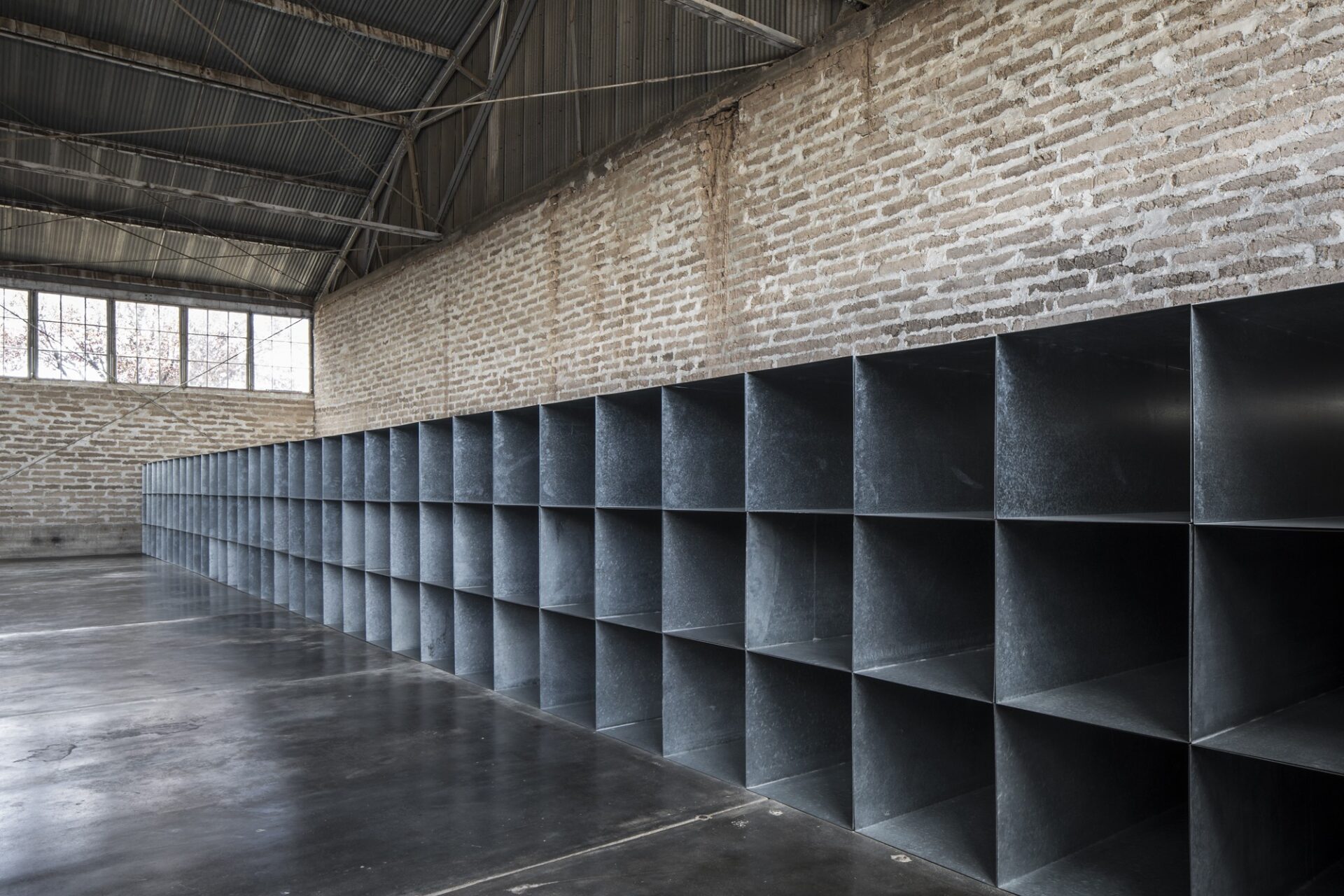This work was in Donald Judd’s exhibition at the Pasadena Art Museum in 1971 (Don Judd, May 11–July 4). This piece from 1969 hastened Judd’s rental and eventual purchase of one of the two large buildings at the Block. As Judd recounted in his 1985 essay “Marfa, Texas”:
In addition to my developing idea of installations and my need for a place in the Southwest, both due in part to the harsh and glib situation within art in New York and to the unpleasantness of the city, I had set a deadline for finding a place. Bill Agee, then director of the Pasadena Art Museum, where I had an exhibition in 1971, had agreed to ship a large piece the museum had borrowed anywhere in the Southwest within a year.1
This work is constructed out of individual units of galvanized iron, stacked three high. In an interview with Judd, John Coplans described the piece as having “the environmental quality of the honeycomb.”2 Judd conceived of the piece as being specific to a place, in that it extended from one wall to the other of any given building in which it was installed. Additional units were made as the piece was exhibited in different locations. The work consisted of fifty-seven units when it was shipped from Pasadena and installed by Judd in the east building of the Block. At this point, the piece only extended about halfway across the south wall of the building, necessitating the fabrication of fifty-one additional units, which Judd had produced in Odessa, Texas, in 1991.
In addition to this work, Judd installed two additional works that were included in the Pasadena show, in his home and studio spaces: one at 101 Spring Street, and another at La Mansana de Chinati/The Block—untitled, 1965.

